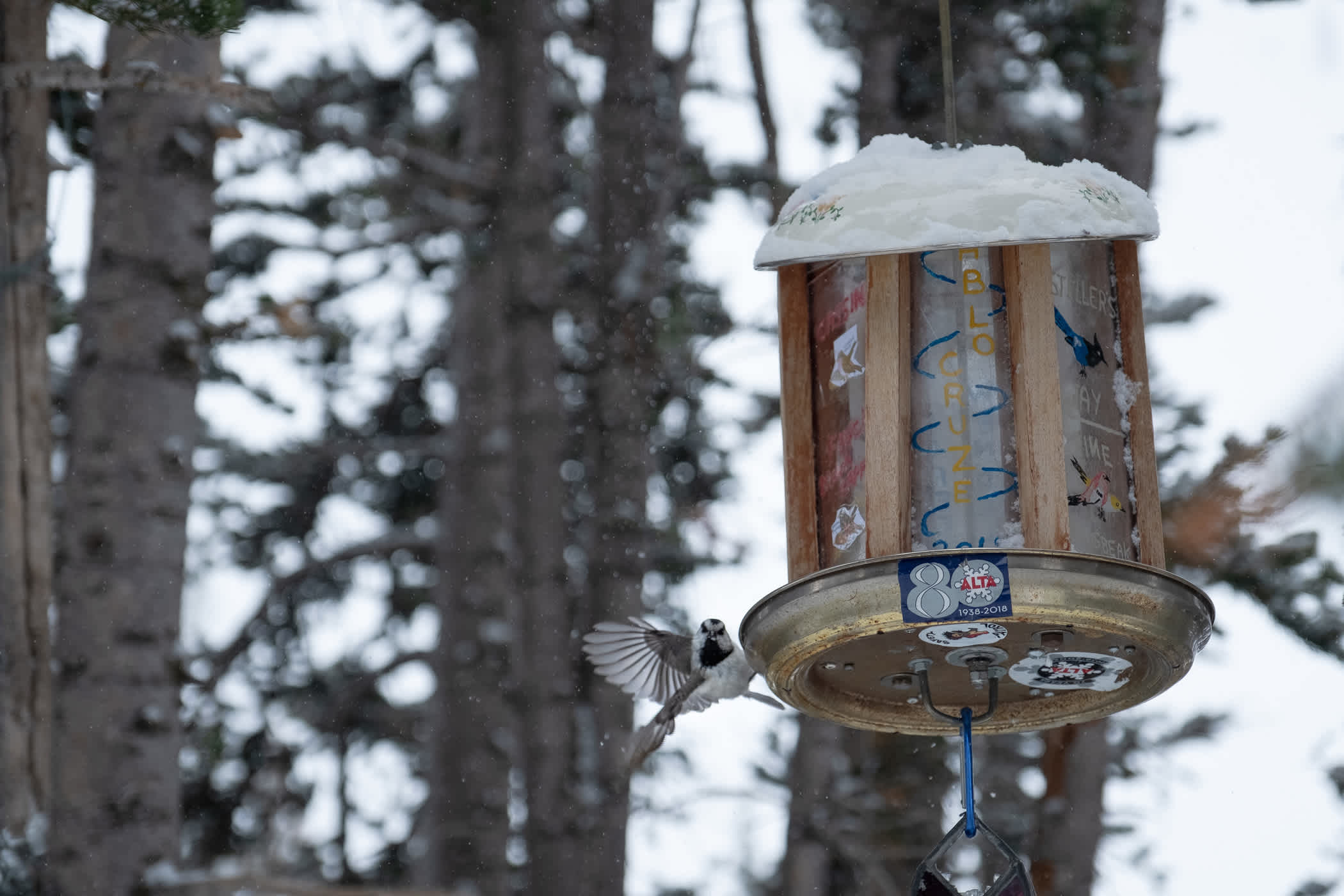Alta is home to Black Rosy-Finches. A rare bird to see, the Black Rosy-Finch resides at high altitude in rugged terrain.
Words: Alta Environmental Center
Alta is home to Black Rosy-Finches. A rare bird to see, the Black Rosy-Finch resides at high altitude in rugged terrain. Because of the geographical difficulty that stands in the way of finding the bird, this bird is one of the least studied birds in North America.
 The elusive Black Rosy-Finch | Photo: National Audubon Society
The elusive Black Rosy-Finch | Photo: National Audubon Society
As temperatures around the globe begin to rise, species that rely on higher elevation habitats and cooler temperatures are being pushed to higher elevations, reducing the amount of habitat available. This habitat loss is detrimental to the Black Rosy-Finch.
It is important that we understand the survival, movement patterns, and current population size of Black Rosy-Finches; without the proper knowledge, understanding, and baseline information, it is difficult to develop conservation efforts for the protection of this species.
Alta Ski Area, along with the Sageland Collaborative, Tracy Aviary, Utah State University, and the Utah Department of Natural Resources, have partnered in a study to gain the baseline information needed to keep these birds thriving. Using feeders with RFID technology (radio frequency identification), tagged birds are recorded when they fly within a certain vicinity of an RFID feeder, allowing scientists to analyze and share information about these birds and their lifestyles.
While several feeders have been installed as part of this study, the feeder at Alta Ski Area is located at the top of the Collins lift. Thanks to the Alta Ski Area Ski Patrol for keeping the Collins feeder full.
 The Collins birdfeeder is home to several species of birds | Photo: Iz La Motte
The Collins birdfeeder is home to several species of birds | Photo: Iz La Motte
In addition, the Town of Alta houses a feeder on top of the Town of Alta building. The scarcity of these birds is real: only ten birds were tagged last year during the pilot year of this study, so scientists are in luck when one of them decides to visit a feeder.
Efforts to tag up to 100 additional birds are underway this year. All information is recorded and shared with every single partner involved in this study, fostering a community of learning and building the invaluable baseline information needed to ensure the conservation of this species.

Add Your Comment